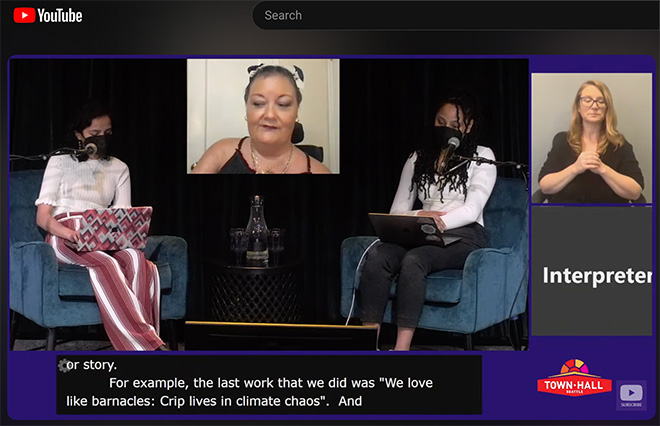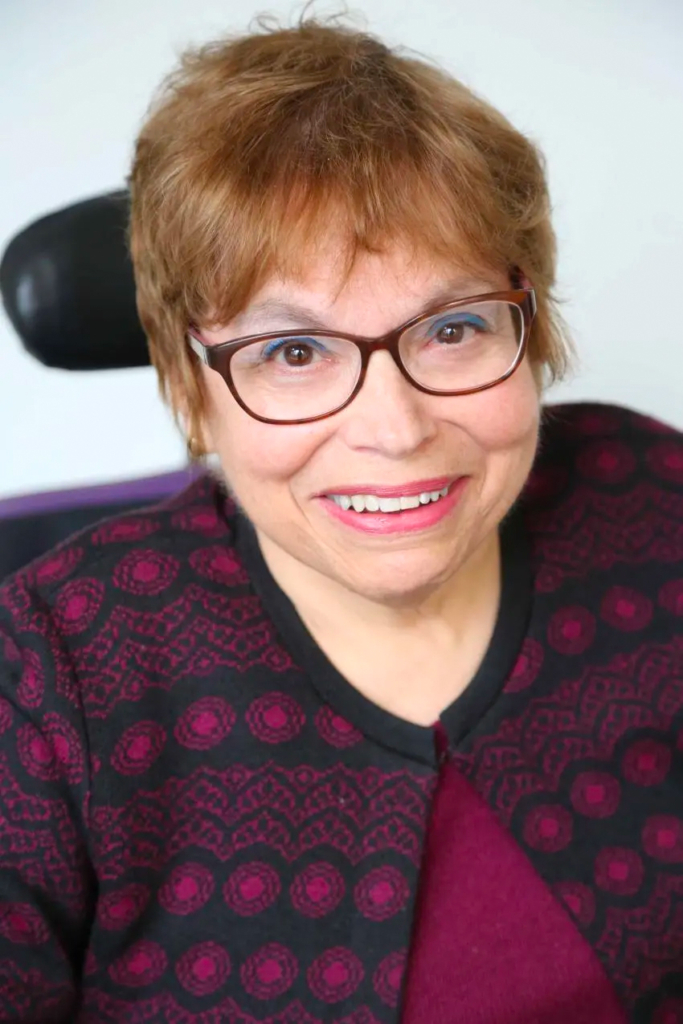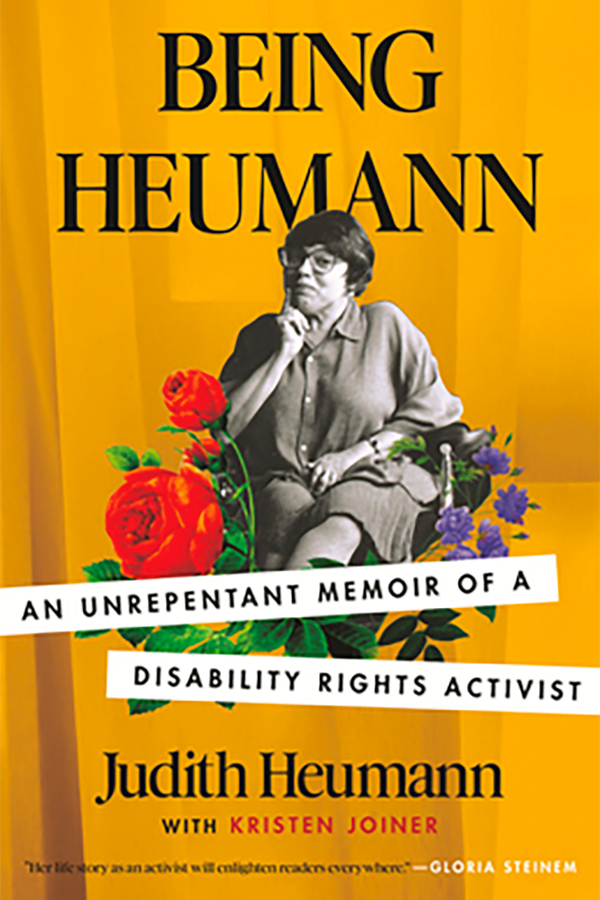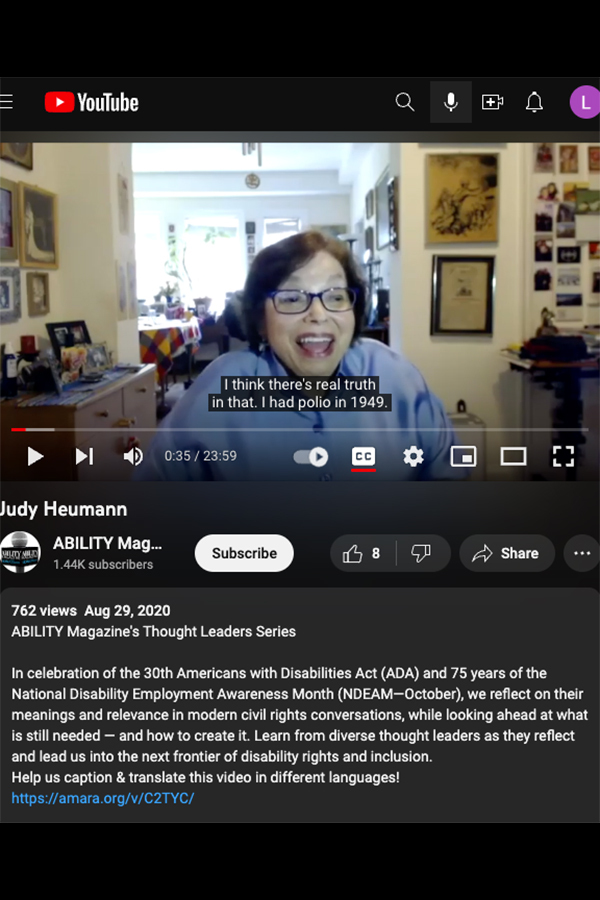A proposal for new digital accessibility guidelines for entities receiving federal funds was released for review by the U.S. Department of Justice on August 4, 2023. Anyone affected by these guidelines had until October 3, 2023 to comment.
- CREATE’s official response, in collaboration with colleagues within the UW and at peer institutions, is posted on the DOJ site temporarily.
- The response is available as an accessible and tagged PDF document (53 pages).
- If you have any questions, reach out to CREATE at create-contact@uw.edu.
August 2023 announcement
Note that the comment period has ended.
The U.S. Department of Justice (DoJ) is proposing new requirements for digital accessibility for the Americans with Disabilities Act (ADA). Their goal is to provide public entities with clear and concrete standards for how to fulfill their obligations under the Americans with Disabilities Act Title II Regulations. The goal of these new standards is to ensure public entities provide equal access to all services, programs, and activities that are provided via the web and mobile apps.
These standards impact mobile apps, websites, and course materials created by and for government bodies, including public schools (K-12 and universities), and public services of all kinds.
Below, we have tried to summarize some of the most important aspects of the proposed rule and to explain them. However, in summarizing we have naturally emphasized things we think are important. Some of the topics the rule touches on that we summarize below include the proposed timeline for making digital content accessible; the proposed rules impacting K-12 and college/university course content; what standards should be met for digital content to be accessible for websites, apps, and live audio captioning; and how compliance should be assessed.
Note that submitted comments are publicly available online at: DOJ-CRT-2023-0007 on www.regulations.gov.
roposed rule, but the DOJ has asked a number of very specific questions that you might want to comment on.
Notable questions, highlighted
We highlight several of the DOJ questions below, labeled with the Question # that the DOJ uses for them. You will see that we present these questions out of order – we present them in the order that made sense to us when we summarized this proposed rule. You can read the whole proposed rule and all the questions, in order, on the posting of Docket (DOJ-CRT-2023-0007) on www.regulations.gov. Sometimes we write Question to Consider before a question; these are questions we think you might want to comment on even though the DOJ did not ask about them.
Why submit comments?
The DOJ is still trying to decide exactly what the rule should say, how quickly public entities should improve digital accessibility, and what exceptions to allow. For example, the current rule states that course content posted on a password-protected website (such as a learning management system (LMS) like Canvas) does not have to be made accessible until a student with a disability needs access to that content. If a student registers for the course, or transfers into it, then the course content has to be made fully accessible to all disabilities by the start of the term or within 5 days (if the term has already started). In addition, the course needs to stay accessible over time.
If you agree with this, you might want to say so in your comments, because someone else might think this is unreasonable, and the DOJ should hear from both sides. But you might disagree, in which case you should also comment.
What are the new standards about?
These standards affect web content and mobile apps. These are very broadly defined and include almost any digital content that is important to interacting with public entities.
Web content is defined as “information or sensory experience that is communicated to the user by a web browser or other software. This includes text, images, sounds, videos, controls, animations, navigation menus, and documents.” It also includes things like web content posted on social media apps, to the extent possible (for example, if the app supports it, the public entity should add image descriptions to images it posts).
Question 1: The DOJ’s definition of “conventional electronic documents” consists of an exhaustive list of specific file types. Should the DOJ instead craft a more flexible definition that generally describes the types of documents that are covered or otherwise change the proposed definition, such as by including other file types (e.g., images or movies), or removing some of the listed file types?
Mobile applications, or “apps,” are defined as “software applications that are designed to be downloaded and run on mobile devices such as smartphones and tablets.” A public entity may use a mobile app that someone else designed and built (an “external mobile app”); in this case it still needs to be accessible.
Question 25: What types of external mobile apps, if any, do public entities use to offer their services, programs, and activities to members of the public, and how accessible are these apps? … should [these apps be exempt]? If so, should this exception expire after a certain time, and how would this exception impact persons with disabilities.
Timeline for making web content and mobile apps accessible
Almost any content or app that is important to interacting with a public entity has to be made accessible within 2 years of the date when the rule becomes official, regardless of whether a disabled person asks for it or is known to be using that content or app. For public entities that serve a small number of people (<50,000), the proposed deadline is 3 years. For example, a small county police department in a county with <50,000 people would have 3 years. However only truly independent entities qualify for this exception. For example, the same policy department in a county with >50,000 people would only have two years; similarly a small public school in a large county would only have two years.
If a public entity feels this would be too costly, under the proposed rule they must prove this and they still have to do as much as possible, “to the maximum extent possible” to support their disabled constituents.
Question 4: What compliance costs and challenges might small public entities face in conforming with this rule? … [do they have internal staff for addressing accessibility? If they have recently addressed accessibility, how much did that cost?]
Question 5: Should the DOJ adopt a different WCAG version or conformance level for small entities or a subset of small entities?
Exemptions
The new rule does include some exceptions, meaning it allows some content to be inaccessible. However, when a disabled person needs the inaccessible content, existing regulations implementing title II of the ADA may come into effect, typically requiring the content to be made accessible.
Exemptions
The new rule does include some exceptions, meaning it allows some content to be inaccessible. However, when a disabled person needs the inaccessible content, existing regulations implementing title II of the ADA may come into effect, typically requiring the content to be made accessible.
Archived and pre-existing non-web documents
The following exemptions are intended to reduce the burden of the new rule for large collections of rarely used documents:
- Archived content not in active use
- Pre-existing non-web documents
The DOJ has several questions about these exemptions (see Questions 15, 16, 17, 18, 19, and 20) which relate to how such content is currently used, where it is posted, and how these exemptions would impact people with disabilities.
Course content
Generally speaking, course content (such as a public syllabus or handout) has to be made accessible. However, course content inside a password protected website such as a learning management system (for both K-12 schools and colleges/universities) is exempted if the content is only available specifically to admitted students enrolled in the relevant course (and disabled parents, in the case of K-12 materials).
Once an institution knows, or should have known that a student (or, for K-12 courses, parent) with a disability is enrolled in the course, “all existing course content must be made fully accessible by the [start of the academic term] for that course… New content added throughout the term for the course must also comply… at the time it is added to the website.”
Under today’s interpretation of the ADA, transferring to a course during the add/drop period or from a waitlist often means that the course is less accessible. The DOJ guidelines address this, requiring in these cases that course material is made accessible within five business days of the student’s enrollment. The DOJ also requires “auxiliary aids and services… that enable the student with a disability to participate” while a course is being made accessible. Notably, the relevant material would need to be fully accessible to all disabilities, “not merely the criteria related to that student or parent’s disability.“
Importantly, the obligation to make the course content accessible is “ongoing for the duration of the course” and “as long as that content is available to students on the password-protected course website.” It is not clear whether this applies to future offerings of the same course, as typically use of an LMS involves creating a “new” password-protected site for each offering.
The DOJ has a lengthy analysis of tangible and intangible benefits of this ruling, as well as expected costs. They estimate that “By the end of year four (two years after postsecondary schools begin to remediate course content), 96 percent of courses offered by public four-year and postgraduate institutions and 90 percent of courses offered by community colleges will have been remediated. They further estimate that postsecondary institutions will finish remediation on their own to preempt requests in the following year.” They have similar estimates about K-12 education.
Question to consider: Should the “the duration of a course” apply to a single offering of a course for a single term, or all offerings of that course in all terms (even if a separate LMS site, with a separate password, was created for each offering)? How might this impact the likelihood that most courses are fully accessible within four years?
Question to Consider: Do you agree that the proposed rule will increase course accessibility to include 96% of courses? How might the variable representation of people with disabilities across fields impact this? For example, people with disabilities are particularly under-represented in STEM fields, where diagrams and math equations are often particularly inaccessible. What could be changed about the proposed rule to make this prediction more likely to come true?
The DOJ also has several questions; we highlight some of them below. We have combined the questions for K-12 and post-secondary educational institutions by referring to [public educational institutions] since the primary difference is that parents with disabilities trigger the need to make documents in the case of K-12 education only.
Question 27 & 36: How difficult would it be for [public educational institutions] to comply with this rule in the absence of this exception?
Question 28 & 37: What would the impact of this exception be on people with disabilities?
Question 33 & 42: How long would it take to make course content available on a public entity’s password-protected or otherwise secured website for a particular course accessible, and does this vary based on the type of course? Do students need access to course content before the first day of class? How much delay in accessing online course content can a student reasonably overcome in order to have an equal opportunity to succeed in a course, and does the answer change depending on the point in the academic term that the delay occurs?
Question 35 & 44: Should the DOJ consider an alternative approach, such as requiring that all newly posted course content be made accessible on an expedited time frame, while adopting a later compliance date for remediating existing content?
This includes third party content. For example, a website for practicing math problems provided, if required to complete coursework, would need to be accessible. The rules do not specifically mention textbooks. However the DOJ asks:
Question 26: Are there particular issues relating to the accessibility of digital books and textbooks that the DOJ should consider in finalizing this rule? Are there particular issues that the DOJ should consider regarding the impact of this rule on libraries?
Question to Consider: Has textbook accessibility been a barrier to accessing courses? What are some examples of problems you’ve encountered? How common are these problems? What could help?
Other exemptions
The DOJ also exempts linked 3rd party information (if it is not providing a direct service) and individualized, password-protected documents (such as personal utility bills). However it specifies that if these documents have deadlines associated with them, and are not accessible, they need to adjust their deadlines “to ensure that a person with a disability has equal access to its services, programs, or activities.” The DOJ asks about whether proper processes are in place:
Question to Consider: How might a delay in receiving an accessible document affect you? For example, could it affect whether you receive care services, money for food, or healthcare services that could cause harm if delayed? If you think this is a concern, what would be a reasonable deadline for receiving these documents?
Question 46: Do public entities have adequate systems for receiving notification that an individual with a disability requires access to an individualized, password-protected conventional electronic document? What kinds of burdens do these notification systems place on individuals with disabilities and how easy are these systems to access? Should the DOJ consider requiring a particular system for notification or a particular process or timeline that entities must follow when they are on notice that an individual with a disability requires access to such a document?
How is “accessible” defined?
The ADA has always included digital accessibility. However, a lack of specific standards in the past has left public entities to define for themselves what compliance looks like. The result has been a lack of consistent attention to accessibility. According to the DOJ, “voluntary compliance … has been insufficient in providing access.”
Now, the DOJ is requiring public entities to follow the Web Content Accessibility Guidelines (WCAG)version 2.1, at the AA level. This is a carefully tested web standard which has recently been expanded to touch on mobile accessibility needs as well.
Question 3: Are there technical standards or performance standards other than WCAG 2.1 that the Department should consider? … If so, what is a reasonable time frame for State and local compliance with WCAG 2.2 and why? Is there any other standard that the Department should consider, especially in light of the rapid pace at which technology changes?
The DOJ notes that “the Access Board’s section 508 standards include additional requirements applicable to mobile apps that are not in WCAG 2.1 [including]: interoperability requirements to ensure that a mobile app does not disrupt a device’s assistive technology for persons with disabilities (e.g., screen readers for persons who are blind or have low vision); requirements for mobile apps to follow preferences on a user’s phone such as settings for color, contrast, and font size; and requirements for caption controls and audio description controls that enable users to adjust caption and audio description functions.“
Question 8: Is WCAG 2.1 Level AA the appropriate accessibility standard for mobile apps? Should the Department instead adopt another accessibility standard or alternative for mobile apps, such as the requirements from section 508 discussed above?
The DOJ also notes that this includes captioning of “live audio,” such as in real-time presentations. They note that many meetings have moved online since the start of the COVID-19 pandemic, making live audio captioning “even more critical for individuals with certain types of disabilities to participate fully in civic life.” Proper live audio captioning includes speaker identification as well as accurate transcription of spoken text, sound effects, and other significant audio. Live audio captioning of this sort cannot be automated, and the DOJ is concerned about costs. They ask:
Question 13: Should the Department consider a different compliance date for the captioning of live-audio content in synchronized media or exclude some public entities from the requirement?
Question 14: What types of live-audio content do public entities and small public entities post? What has been the cost for providing live-audio captioning?
Finally, the DOJ notes that “WCAG 2.1 can be interpreted to permit the development of two separate websites—one for individuals with relevant disabilities and another for individuals without relevant disabilities—even when doing so is unnecessary and when users with disabilities would have a better experience using the main web page.” They rightly point out that this raises “concerns about user experience, segregation of users with disabilities, unequal access to information, and maintenance”. Thus the proposed rule explicitly states that parallel development of a separate website, document or app is “permissible only where it is not possible to make websites and web content directly accessible due to technical limitations (e.g., technology is not yet capable of being made accessible) or legal limitations (e.g., web content is protected by copyright).” They go on to ask:
Question 49: Would allowing [a separate alternate version of a website, document, or app] due to technical or legal limitations result in individuals with disabilities receiving unequal access to a public entity’s services, programs, and activities?
How will compliance be measured?
The DOJ has many questions about the best way to measure compliance. The DOJ acknowledges that a public entity might reasonably not be in full compliance with all of WCAG 2.1’s AA standards at all times. This is because web content changes frequently, assessments may not always agree, and may include thousands of pages of content, making compliance more difficult than ensuring access to, say, “a town hall that is renovated once a decade…. The Department also believes that slight deviations from WCAG 2.1 Level AA may be more likely to occur without having a detrimental impact on access than is the case with the ADA Standards. Additionally, it may be easier for an aggrieved individual to find evidence of noncompliance with WCAG 2.1 Level AA than noncompliance with the ADA Standards, given the availability of many free testing tools and the fact that public entities’ websites can be accessed from almost anywhere.”
They discuss several alternatives that could allow for the necessity of slight deviations and short periods of noncompliance while still promoting high compliance overall, including a percentage-based standard (which may be difficult to implement, and may need to weight different aspects of WCAG 2.1 differently to achieve equity); a standard based on policies for feedback, testing and remediation (which may be inconsistently applied); or “organizational maturity” meaning the organization can show it has a robust accessibility program in place (which may not translate to full accessibility or compliance). They solicit commentary on compliance:
The DOJ asks what evidence an allegation of noncompliance requires (Question 50); Whether organizational feedback practices, testing policies, remediation practices, or organizational maturity should matter in assessing compliance (Questions 51, 55, 58). The DOJ also asks about what specific feedback practices, testing policies, remediation policies, and level of organizational maturity are needed (Questions 52, 53, 54, 59). They also ask:
Question 62: Should the Department address the different level of impact that different instances of nonconformance with a technical standard might have on the ability of people with disabilities to access the services, programs, and activities that a public entity offers via the web or a mobile app? If so, how?
To conclude, the DOJ’s proposed rule covers a number of topics that are of great importance to people with disabilities. We strongly urge you to comment on the rule.
If you have any questions, reach out to CREATE at create-contact@uw.edu.








